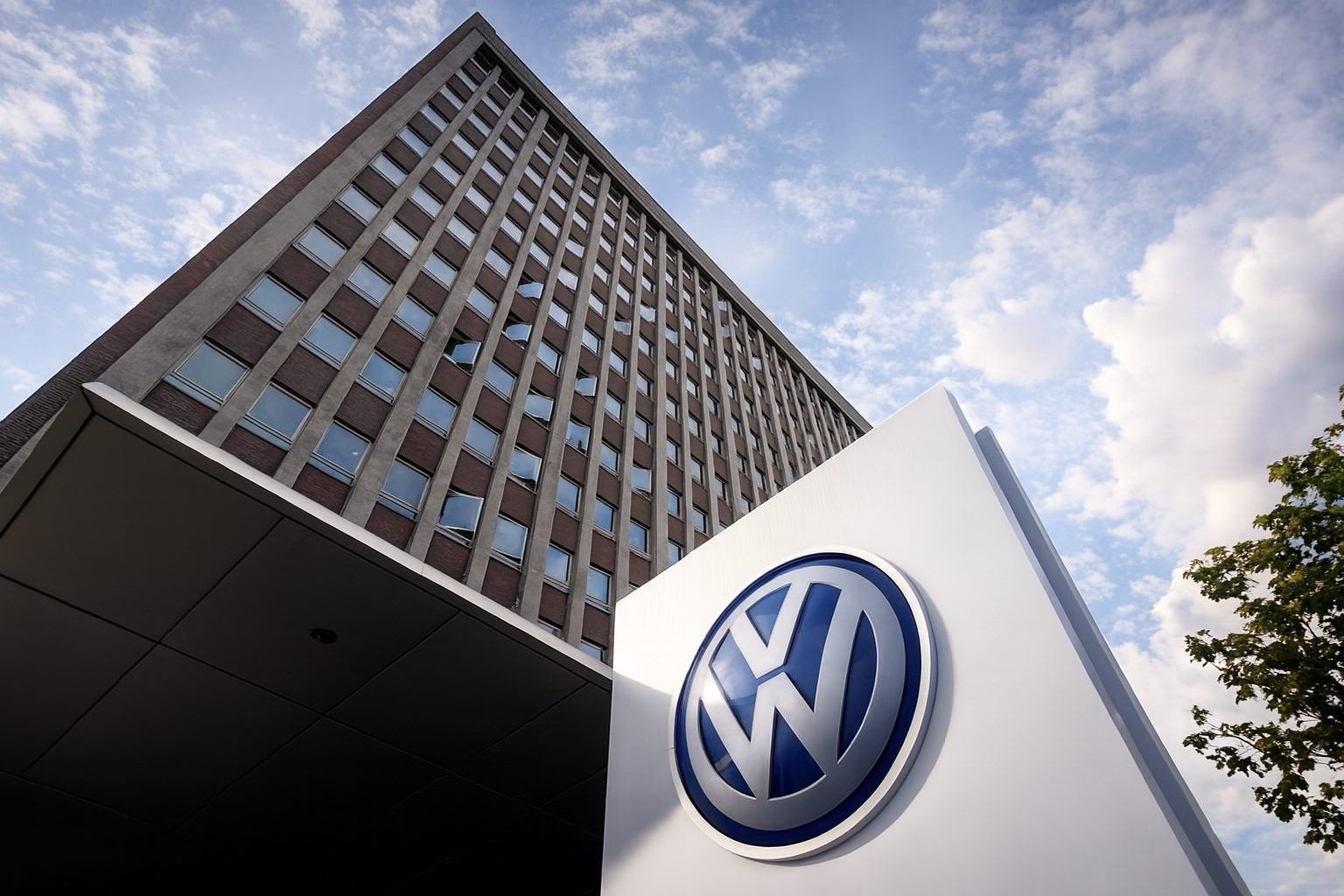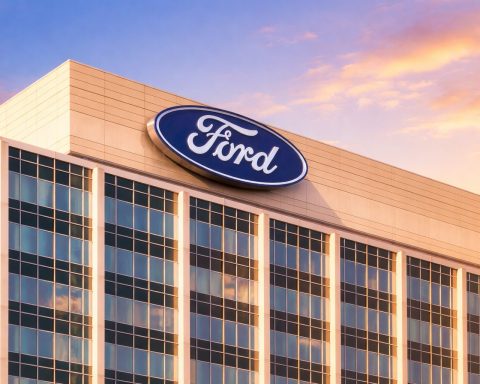Published: November 27, 2025
Volkswagen is redefining what “Made in China” means for the global car industry. Within days of unveiling a fully fledged R&D and testing hub in the Chinese city of Hefei, the German automaker is now talking openly about building electric vehicles in China at up to half the development cost of Europe — and exporting Chinese-made cars to more markets around the world, while deliberately excluding Europe from that export push. [1]
Taken together, these moves signal a historic pivot: China is no longer just Volkswagen’s biggest sales market. It is becoming the group’s core innovation and cost base for the next generation of electric and “software-defined” cars.
Hefei becomes VW’s first full-process R&D hub outside Germany
This week, Volkswagen confirmed that its China Technology Company (VCTC) in Hefei has completed a major expansion, turning the site into the company’s first integrated R&D base outside Germany capable of taking a vehicle from concept all the way to mass-production validation. [2]
Key details from Chinese and company sources:
- The new test workshops in Hefei were inaugurated on November 25, 2025, marking the final stage of VCTC’s build‑out. [3]
- The R&D and testing complex spans around 100,000 square meters and houses more than 100 laboratories, covering everything from software and electronic architectures to battery, powertrain and full-vehicle durability testing. [4]
- By integrating software development, hardware testing and full-vehicle validation under one roof, Volkswagen says the new setup can cut overall vehicle development time by roughly 30% compared with its previous cycles in China. [5]
At the heart of the Hefei campus is VW’s first China-specific electronic/electrical architecture, often described as a “China Electronic Architecture” (CEA). Engineers are using new software-defined vehicle processes and central computing platforms to develop Chinese-market cars on an 18‑month cycle, significantly faster than traditional platforms. [6]
Crucially, Volkswagen stresses that Hefei is not just a local test lab. The facility will also support technologies and models that are exported to markets such as ASEAN countries and the Middle East, creating a direct pipeline from Chinese engineering benches to foreign showrooms. [7]
“Made in China” now means 50% cheaper EV development
The most headline-grabbing claim is about cost. Volkswagen executives have said the company can now cut the development cost of some electric models in China by as much as 50% compared with its 2023 baseline in Germany. [8]
Several factors underpin that estimate:
- Deep local supply chains: From batteries to electronics and rare-earth magnets, China hosts a highly integrated ecosystem. VW’s suppliers can be brought into projects early, fine‑tuning designs for cost and manufacturability from day one. [9]
- Faster development loops: Traditional development cycles of “just over four years” have been shortened by around a third thanks to co-located teams and parallel testing at Hefei. [10]
- Local talent and partnerships: VW has invested billions of euros in China-focused software and EV engineering, including partnerships with Chinese players such as XPeng and long‑term joint-venture partner SAIC. [11]
Reports based on Financial Times and company disclosures note that Volkswagen plans to launch around 30 EV models in China over the next five years, many of them architected and validated in Hefei. [12]
Chinese state media frame the new hub as a symbol of China’s shift from “world’s factory” to “global innovation laboratory”, arguing that VW’s decision shows how foreign multinationals increasingly see China as a front line for cutting‑edge EV and software development, not just cheap assembly. [13]
Export strategy: Chinese-built VWs head abroad – but not to Europe
On the export side, Volkswagen is starting cautiously—but significantly.
In an interview in Hefei this week, Volkswagen Group China’s chief technology officer, Thomas Ulbrich, said the company has already begun exporting petrol-powered limousines built in China to the Middle East and is evaluating which “made in China” models are suitable for additional markets. Destinations under consideration include Southeast Asia and Central Asia. [14]
One red line is clear: no exports of these China-built cars to Europe, at least for now. According to Ulbrich, the EV and software architectures being developed in China are not directly aligned with the technology stacks and regulations Volkswagen uses for its European line‑up. [15]
In plain terms, Europe is a political and regulatory minefield:
- The European Union has imposed provisional tariffs of up to 37.6% on Chinese-made electric vehicles, citing state subsidies and overcapacity. [16]
- At the same time, European brands are scrambling to defend their home turf against low‑cost Chinese rivals led by BYD, Nio and others.
By ring‑fencing Europe from its current China-export strategy, Volkswagen avoids intensifying the political debate over “Chinese EV imports” while still using its Chinese cost base to compete everywhere else.
Chinese commentary has seized on this nuance. An opinion piece carried by People’s Daily’s English site describes Volkswagen’s Hefei investment and export plans as the “Hefei model”, arguing that the automaker’s “In China, for China” strategy is in practice “In China, for the world.” [17]
Europe talks “de-risking” even as its auto industry leans into China
Volkswagen’s China push is not happening in isolation. Across the industry, European automakers are quietly doubling down on Chinese technology and manufacturing partnerships, even as Brussels hardens its stance on Chinese imports.
Recent developments underline this tension:
- Chinese automaker GAC is preparing to build its Aion V electric SUV in Austria with contract manufacturer Magna, explicitly to avoid EU tariffs on Chinese-built EVs while still leveraging Chinese designs. [18]
- Battery champion CATL, which already dominates global EV battery supply, has broken ground on a €4.1 billion battery plant in Spain and will train local workers to staff it—another sign that Europe’s electrification drive depends on Chinese technology, even as trade frictions deepen. [19]
The pattern is clear: European policymakers speak the language of “de-risking” and “reducing dependence on China,” but the economics of EVs keep drawing their own carmakers closer to Chinese supply chains.
Volkswagen is arguably the most visible example. The company has:
- Consolidated an entire EV value chain in Hefei, from R&D and testing to manufacturing and sales. [20]
- Structured its China operations to make faster local decisions and tailor cars to Chinese tastes, instead of relying on Germany for every key platform decision. [21]
In this context, the Hefei center is both a competitive weapon and a strategic statement: VW is betting that deeply embedding itself in China is the only realistic way to compete with Chinese brands—rather than trying to beat them from afar.
Winners and losers: what VW’s China pivot means for drivers and workers
Volkswagen’s new China-centric strategy has sharply different implications depending on where you sit in the global auto ecosystem.
For Chinese consumers
Chinese EV buyers stand to benefit first:
- Faster development cycles mean quicker refreshes and more models tuned to local expectations on software, connectivity and driver-assistance features. [22]
- Local R&D makes it easier for VW to integrate Chinese partners’ tech—such as advanced infotainment or ADAS modules—without lengthy back‑and‑forth with German headquarters. [23]
In the world’s most competitive EV market, where BYD and other domestic brands churn out new models at breathtaking speed, Volkswagen is essentially trying to play by Chinese rules rather than dragging European processes into a market that has moved on.
For drivers in emerging markets
The next beneficiaries are likely to be customers in Middle Eastern, Southeast Asian and Central Asian markets, where VW is testing exports of China-made models. [24]
If Volkswagen passes along some of its Chinese cost savings, buyers in these regions could see:
- More affordable EVs and hybrids from a well-known European brand.
- Vehicles that blend German brand perception with Chinese-style features, such as software‑heavy dashboards and frequent over‑the‑air updates.
Those markets are also less politically sensitive than Europe or the US when it comes to Chinese industrial policy, giving VW more room to maneuver.
For European workers and suppliers
The picture is more complicated in Europe:
- Moving high-value R&D and testing to China inevitably raises concerns about future investment and employment at German and European facilities, especially as VW pursues broader cost-cut programs in its home market. [25]
- European suppliers that are not deeply embedded in Chinese EV supply chains may find themselves sidelined as VW increasingly sources critical components—batteries, power electronics, e-motors—from within China’s ecosystem. [26]
Unions and policymakers in Germany are already pushing Volkswagen to spell out how its “In China, for China” and now “for the world” moves will affect long-term investment at home. That debate is likely to intensify as Chinese-developed platforms start showing up in more export markets.
Strategic risks: concentration, politics and technology control
From a strategic standpoint, Volkswagen’s China-first pivot carries meaningful risks, even if the cost advantages are compelling.
- Concentration risk
Building a full development and validation pipeline in one country—however competitive—creates exposure to regulatory shifts, geopolitical tensions, and supply disruptions specific to that market. - Technology and IP governance
As more core software and architecture work is done in China, VW must tightly manage intellectual property across joint ventures, suppliers and internal teams, especially when platforms are reused globally. - Policy whiplash
Volkswagen is threading a needle between European industrial policy and Chinese industrial strategy. A sharp change on either side—tougher EU rules on foreign tech, or tighter Chinese controls on data and exports—could complicate its ability to use China-based platforms worldwide.
Chinese state media, however, present Volkswagen’s decision as evidence that cooperation beats decoupling, arguing that multinational companies that embrace China’s innovation capabilities will be better positioned for long-term growth than those that attempt to build walls. [27]
The bottom line
On November 27, 2025, the picture that emerges around Volkswagen is stark:
- The company has finished building a €2.5–€4 billion class EV R&D and testing “super-lab” in Hefei that can develop and validate next-generation vehicles end-to-end. [28]
- VW says China allows it to slash EV development costs by up to 50% and shorten timelines by about 30%, giving it a fighting chance in the global EV price war against Chinese champions. [29]
- It is exporting Chinese-made cars to new overseas markets, but deliberately steering clear of Europe as tariffs, politics and technology stacks diverge. [30]
For now, Volkswagen appears convinced that the benefits outweigh the risks. If the “Hefei model” succeeds, it may become a template—not just for the German giant, but for any legacy automaker trying to survive the brutal economics of the EV transition.
References
1. www.ft.com, 2. carnewschina.com, 3. carnewschina.com, 4. carnewschina.com, 5. carnewschina.com, 6. carnewschina.com, 7. carnewschina.com, 8. www.ft.com, 9. www.asiafinancial.com, 10. www.asiafinancial.com, 11. www.reuters.com, 12. www.ft.com, 13. en.people.cn, 14. www.reuters.com, 15. www.reuters.com, 16. www.reuters.com, 17. en.people.cn, 18. www.reuters.com, 19. auto.economictimes.indiatimes.com, 20. en.people.cn, 21. www.volkswagen-group.com, 22. carnewschina.com, 23. www.reuters.com, 24. www.reuters.com, 25. www.volkswagen-newsroom.com, 26. rareearthexchanges.com, 27. en.people.cn, 28. www.volkswagen-group.com, 29. www.ft.com, 30. www.reuters.com










